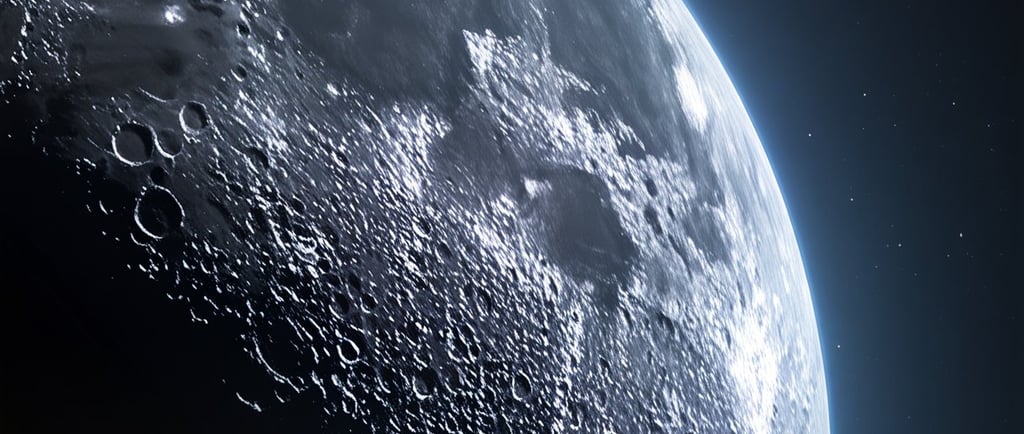The Ice Moon: A Glimpse at the Icy Satellite Emitting Shards
SPACE


An Introduction to the Icy Moon
The moon, a celestial body that has fascinated humans for centuries, is often subject to myths and scientific inquiries alike. Recent discoveries have unveiled a captivating phenomenon: a moon composed entirely of ice, gleaming with enigmatic beauty and emitting shimmering ice shards. This unusual characteristic not only piques the interest of astronomers but also invites questions about the formation and composition of such an intriguing lunar body.
The Composition of the Ice Moon
Understanding the composition of an ice moon is essential for comprehending its unique attributes. Unlike rocky moons, an ice moon primarily consists of frozen water and other ices, which can be composed of substances like ammonia or methane. The process leading to its formation remains a topic of research; however, scientists speculate that it could have originated from a primordial nebula or from the remnants of a larger celestial fusion. The presence of these ice shards suggests dynamic geological processes, possibly driven by tidal heating or radiation from its parent planet, helping to maintain an active surface.
The Phenomenon of Ice Shards Emission
The captivating aspect of this ice moon's behavior lies in its ability to emit ice shards into space. This phenomenon raises numerous scientific inquiries about the mechanics behind it. The ejection of shards can be attributed to several potential factors, including sublimation, volcanic activity, or impacts with meteoroids that fracture the icy surface. Each shard serves as an observation point for study, providing insights into the moon's past and ongoing geological activity.
Implications for Future Research
The existence of an ice moon that emits ice shards offers numerous implications for future scientific research. Understanding its geological processes can enhance fundamental knowledge about moon formation within the solar system. Such a moon may also hold clues to the potential for life, as subsurface oceans created by tidal heating might harbor microbial ecosystems. The icy shards themselves present unique opportunities for astronomical study, allowing scientists to analyze their composition and visualize the physical and chemical conditions present in their originating environment. Explore and embrace the mysteries of our cosmic neighborhood; the icy moon awaits further inquiry.
